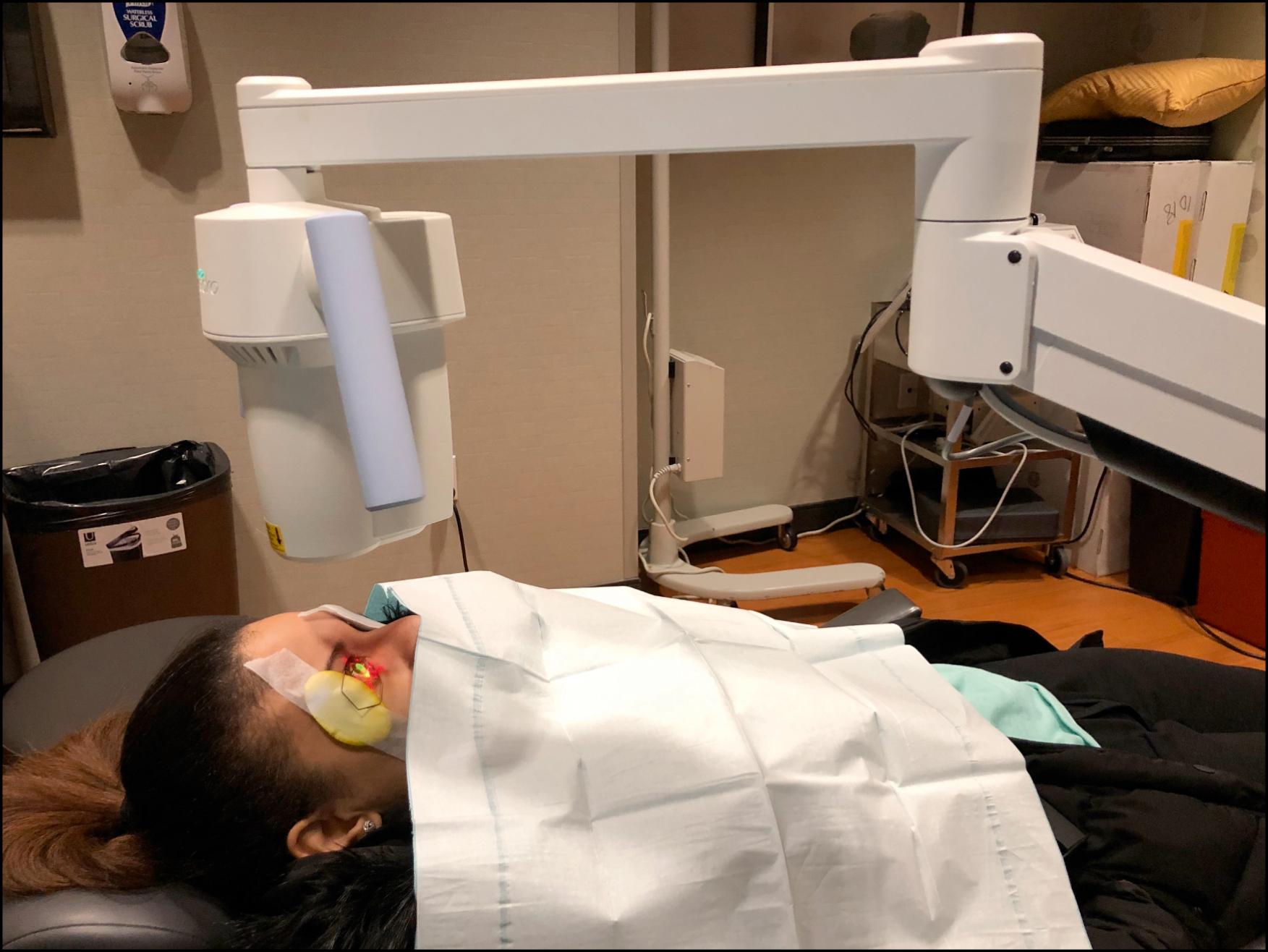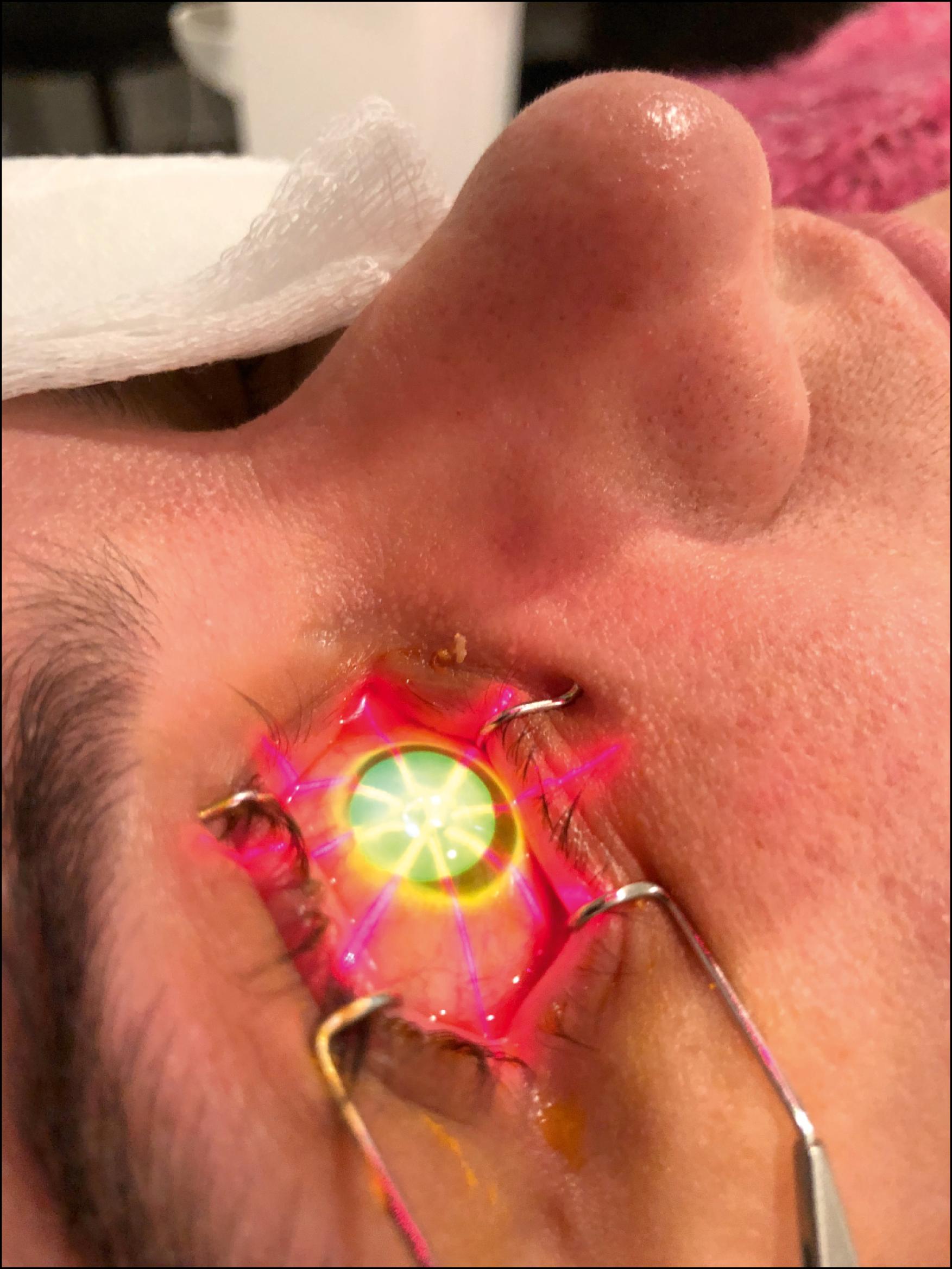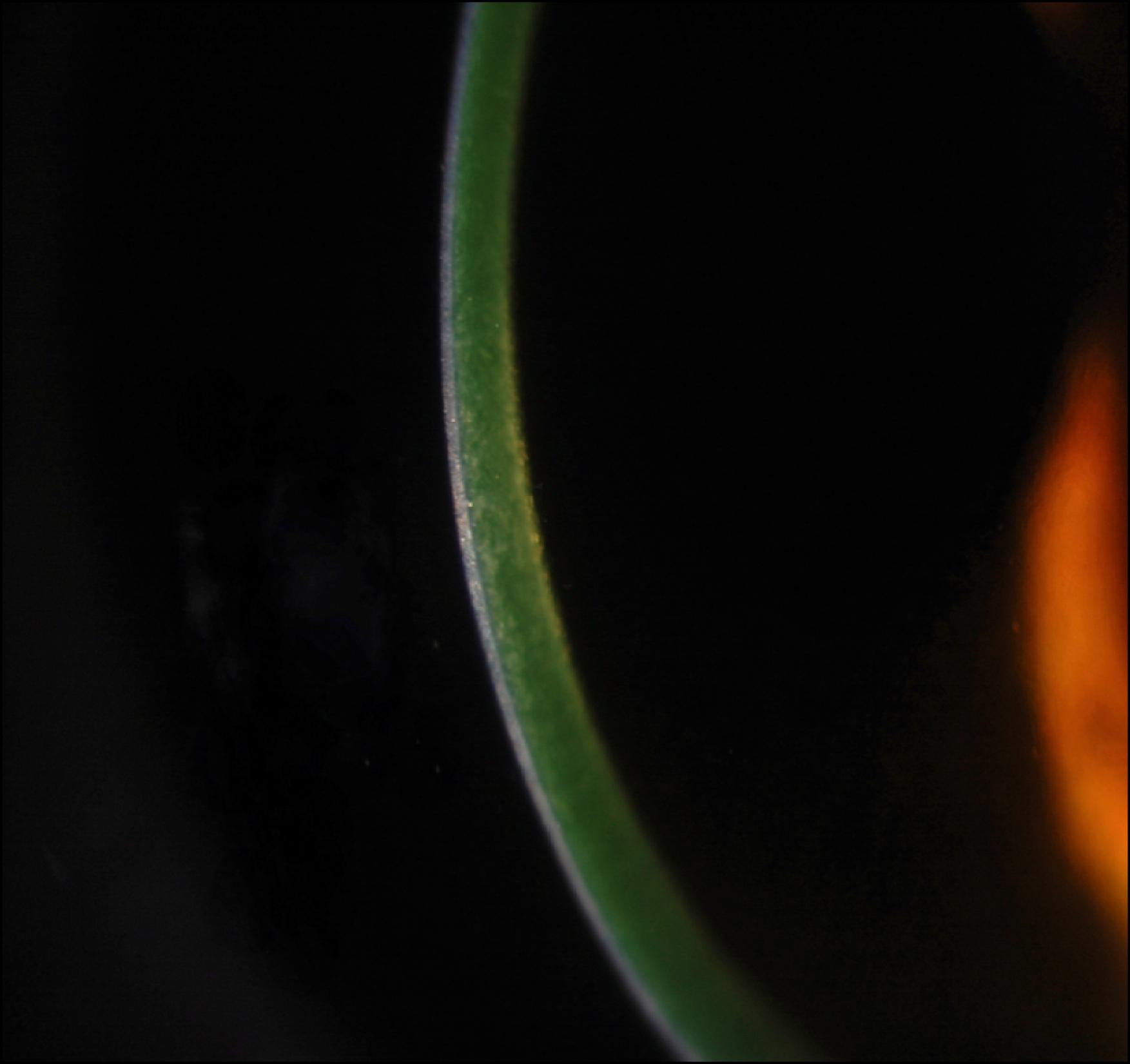Physical Address
304 North Cardinal St.
Dorchester Center, MA 02124
Corneal collagen crosslinking (CXL) has become the mainstay of treatment to prevent progression of keratoconus (KCN).
The standard Dresden protocol involves epithelial removal, a 30 minute topical application of riboflavin, followed by a 30-minute ultraviolet light exposure.
Multiple long-term studies demonstrate excellent efficacy for halting the progression of keratoconus (KCN).
Complications have been described and are typically not severe or common.
Modifications to this standard protocol, such as transepithelial crosslinking (TEX) and high fluence crosslinking, have shown safety and efficacy.
The advent of corneal collagen crosslinking (CXL) has transformed the management and clinical course of patients with keratoconus (KCN). Currently, KCN is the second most common indication for corneal transplantation and, prior to CXL, clinicians had few options to alter the course of the disease. CXL is a minimally invasive procedure that halts the progression of keratoconus by forming crosslinks between collagen monomers that strengthen the structure of corneal collagen.
Collagen CXL was first used in medicine in such diverse treatments as hardening dental enamel and stabilizing prosthetic heart valves. The use of this technique in the cornea was first developed at the University of Dresden by Spoerl and Seiler in 1998 3 ; since then, CXL became available for clinicians in Europe in 2003. A corneal CXL system was approved by the US Food and Drug Administration (FDA) for use in the United States in 2016 by Avedro and is now routinely used worldwide to prevent the progression of ectasia for patients with KCN ( Figs. 152.1 and 152.2 ).


CXL strengthens corneal collagen by forming crosslinks between collagen monomers. Collagen crosslinks are naturally formed in the human cornea by three separate pathways: enzymatic, glycation, and oxidation. CXL naturally occurs with age. Therefore it is unusual to develop keratoconus later in life and is why patients with keratoconus commonly stop progressing in their third and fourth decade. In the enzymatic pathway, lysin oxidase catalyzes the formation of crosslinks as part of the normal maturation of collagen. In the glycation pathway, collagen crosslinks are formed by advanced glycation end products, and this may explain why diabetics show a reduced incidence and less progression of KCN. In the oxidation pathway, reactive oxidation species formed by ultraviolet (UV) light mediate the formation of collagen crosslinks.
CXL utilizes this third pathway. In this technique, ultraviolet-A light (UVA) is combined with the naturally occurring photosensitizer, riboflavin (vitamin B2), to release free radicals that increase the formation of intra- and inter-fibrillar carbonyl-based covalent bonds through the process of photopolymerization. The precise location of the crosslinks at a molecular level is not as yet determined, but it is thought that it occurs predominantly at the collagen fibrillar surface and not within the collagen fibrils themselves.
The exact molecular response to CXL is also not yet fully understood, but experimental data has suggested that it occurs via two mechanisms: aerobic and anaerobic. In the aerobic mechanism, after excitation of the riboflavin molecule, photosensitized oxidation of stromal proteins occurs via its interaction with reactive oxygen species (type II mechanism). In the anaerobic mechanism, after the oxygen supply is depleted, reactive species of radical ions are produced and interact with numerous molecules in the corneal stroma (type I mechanism). The liberation of these molecules in the corneal stroma, coupled with the resulting wound-healing response to the procedure’s mechanical and photochemical insult, is thought to induce an increase in corneal rigidity in the anterior 200 μm of the stroma, modulus of elasticity, collagen fiber thickness, resistance to stretching, and enzymatic degradation, with an associated decrease in swelling percentage and permeability.
The major indication for the use of CXL is to halt the progression of KCN. Additionally, it has been used in the treatment of pellucid marginal degeneration and iatrogenic ectasia resulting from laser in situ keratomileusis (LASIK) photorefractive keratectomy (PRK), and radial keratotomy. CXL has also been used in combination with other treatments, such as intracorneal ring segment implantation and topography-guided PRK. ,
The special considerations of collagen crosslinking have been listed in Table 152.1 .
| Special Consideration | Reason | Note |
|---|---|---|
| Corneal thickness of less than <400 μm | Potential risk of endothelial damage as the UV irradiance would increase beyond the endothelial safety limit of 0.18 mW/cm 2 . | In selected cases a hypoosmolar solution of riboflavin 0.5% with 0.9% sodium chloride solution can be used to increase the preoperative stromal thickness of thin corneas. CXL in thinner corneas has also been performed beneath a bandage contact lens. Other investigators routinely perform crosslinking with corneal thickness of <400 µm |
| Preoperative keratometry reading of >58 D | Increased risk of progression and permanent postoperative stromal haze , | |
| Age more than the 35 years | Increased risk of corrected visual acuity loss | Often patients with keratoconus are stable at this age but should be treated with documented progression or the desire to perform topographic ablation |
| Best corrected visual acuity (BCVA) of >20/25 | Increased risk of corrected visual acuity loss | |
| Patients with a background of active disease in the anterior segment (e.g., herpetic keratitis) | Increased risk of corneal melting | Consider controlling the disease process before CXL (e.g., with systemic antiviral cover for herpetic keratitis) |
| Significant central corneal opacity | This group of patients are likely to need a corneal transplant and are unlikely to be helped by CXL | |
| History of incisional refractive surgery | Potential risk of keratotomy incisional rupture with epithelial removal | There has been a case report of successful CXL in a patient progressive corneal ectasia and hyperopic shift after radial keratotomy. Epithelium on CXL may be preferred in these cases |
| Systemic autoimmune or connective tissue disorder | Insufficient safety data available |
The standard protocol, or what is referred to as the Dresden protocol for CXL as initially reported by Wollensak et al., requires epithelial removal, application of a 0.1% riboflavin 5-phosphate and 20% dextran solution for 30 minutes before UV exposure, with a wavelength of 370 nm and homogenous irradiance of 3 mW/cm 2 for 30 minutes (5.4 J/cm 2 ). The cornea is checked at the slit lamp for visualization of riboflavin penetrating the cornea stroma, which will give the cornea a yellow appearance and flare as the riboflavin enters the anterior chamber ( Fig. 152.3 ). Riboflavin drops are reapplied to the corneal surface every 5 minutes for the duration of irradiation. Intraoperative pachymetry can be used prior to UV irradiance to ensure that the cornea is not too thin.

Following CXL, patients are prescribed topical antibiotics until the cornea reepithelializes completely, and topical corticosteroids for 1 month to minimize haze and scarring. The medical treatment of CXL patients is very similar to the treatment patients receive following PRK. Systemic analgesics and topical nonsteroidal antiinflammatory drops, as well as therapeutic soft contact lenses, can be used for pain management in the early postoperative period. Topical anesthetic drops can also be of use in a limited form in the first 2 days after treatment. Patients are advised to discontinue their rigid contact lens wear for at least 2 weeks after surgery.
Become a Clinical Tree membership for Full access and enjoy Unlimited articles
If you are a member. Log in here